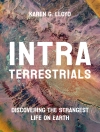The aim of this book is to unlock the power of the freeware R language to advanced university students and researchers dealing with whole-rock geochemistry of (meta-) igneous rocks. The first part covers data input/output, calculation of commonly used indexes and plotting in R. The core of the book then focusses on the presentation and practical implementations of modelling techniques used for fingerprinting processes such as partial melting, fractional crystallization, binary mixing or AFC using major-, trace-element and radiogenic isotope data. The reader will be given a firm theoretical basis for forward/reverse modelling, followed by exercises dealing with typical problems likely to be encountered in real life, and their solutions using R. The concluding sections demonstrate, using practical examples, how a researcher can proceed in developing a realistic model simulating natural systems. The appendices outline the fundamentals of the R language and provide a quick introductionto the open-source R-package GCDkit for interpretation of whole-rock geochemical data from igneous and metamorphic rocks.
Tabella dei contenuti
1 Introduction.- Part I R/GCDkit at work.- 2 Data manipulation and simple calculations.- 3 Classical plots.- 4 Specialized plots.- 5 Radiogenic isotopes.- Part II Modelling major elements.- 6 Direct models.- 7 Reverse models.- 8 Forward modelling in R.- 9 Reverse modelling in R.- Part III Modelling trace elements.- 10 Dilute trace elements: partition coefficients.- 11 Direct (dilute) trace-element models.- 12 Reverse (dilute) trace-element models.- 13 Trace elements as essential structural constituents of accessory minerals: the solubility concept.- 14 Forward modelling in R.- 15 Reverse modelling in R.- Part IV Radiogenic isotopes.- 16 Direct models.- 17 Reverse models.- 18 Forward modelling in R.- 19 Reverse modelling in R.- Part V Practical modelling.- 20 Choosing an appropriate model.- 21 Semi-quantitative geochemical approach.- 22 Constraining a model.- 23 Numerical tips and tricks.- 24 Common sense in action.- Part VI Worked examples.- 25 Differentiation of a calc-alkaline volcanic series: example of the Atacazo-Ninahuilca volcanoes, Ecuador.- 26 Progressive melting of a metasedimentary sequence: the Saint-Malo migmatitic complex, France.- Appendix I R syntax in a nutshell.- Appendix II Introduction to GCDkit.- Appendix III Solving systems of linear algebraic equations in R.
Circa l’autore
Vojtěch Janoušek (*1968) is associate professor at the Charles University in Prague, employed in the radiogenic isotopes laboratory of the Czech Geological Survey. He received a MSci from the Charles University and a Ph D in geochemistry from the University of Glasgow. His research focusses on igneous geochemistry, geochronology and numerical modelling as well as computing in geosciences. He is editor-in-chief of open-access Journal of Geosciences.
Jean-François Moyen is professor at the University of Saint-Etienne, France. He obtained a Ph D in petrology and geochemistry at the University of Clermont-Ferrand (France), and was a post-doc and then lecturer in Stellenbosch, South Africa (2003–2009). His research interests include geochemical modelling, igneous petrology and geochemistry.
Hervé Martin is Professor at the University Blaise Pascal in Clermont-Ferrand, France, where he works in the “Laboratoire Magmas et Volcans”. The research that he develops consists inmodeling the geochemical behaviour of major and trace elements in order to constrain the petrogenesis of the Earth’s primitive continental crust, as well as magma genesis in modern subduction zones.
Vojtěch Erban is working at the Radiogenic Isotopes Laboratory of the Czech Geological Survey in Prague. His professional interests comprise geochemistry, isotope analytics and geochemical modelling.
Colin Farrow is an IT specialist and former member of the Department of Geology & Applied Geology, University of Glasgow with an interest in developing software for geological data analysis.












